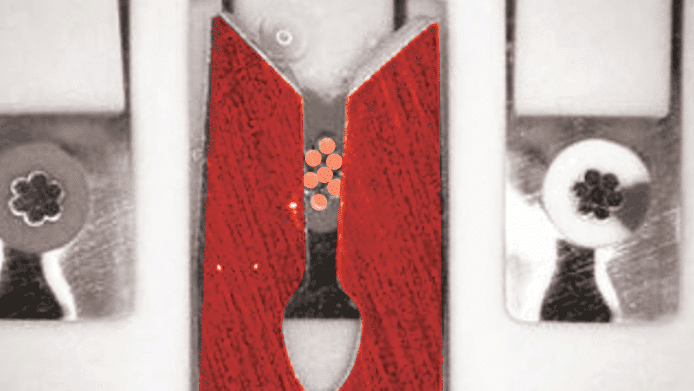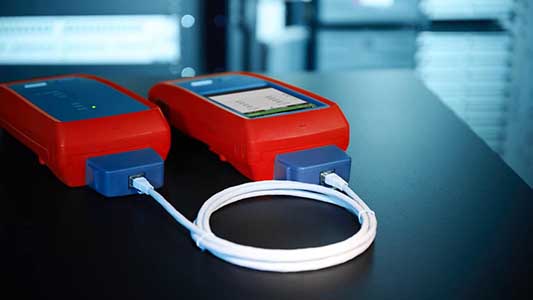R&M provides information about risks for signal transmission in local area networks that are overlooked. The copper contact technology is decisive for Power over Ethernet.
In many networks, there is an inconspicuous brake on data traffic. R&M, the globally active developer and provider of high-end infrastructure solutions for data and communications networks, based in Wetzikon, Switzerland, explains the situation. The often unrecognized vulnerability in local area networks (LANs) is due to certain effects of electrical resistance. Experts know this phenomenon as resistance unbalance in copper cabling. Problems increasingly occur when companies use their LAN untested for Power over Ethernet. R&M explains the background in a video, in a free white paper, and in the specialist magazine CONNECTIONS 65. Measurement methods, the technological solution developed by R&M, and criteria for selecting patch cords are presented.

PoE needs suitable cabling

Power over Ethernet (PoE) is experiencing a boom. Sales of PoE-capable devices are increasing by 20% annually. Due to this strong demand, infrastructure specialist R&M feels compelled to provide information on key technological aspects.
With PoE, modern terminal equipment can also be supplied with power in the LAN. Current and data flow via a single Ethernet network cable. This saves additional electrical wiring for terminal equipment such as WLAN connection points, sensors, surveillance cameras, and many other smart building systems.
Companies often use the existing LAN cabling for new PoE applications without first testing whether that works. They also use existing or inexpensive patch cords to connect the PoE devices. However, the demands on LAN cabling increase when high-speed data transmission and PoE have to work together with high currents. This is why R&M recommends checking the LAN separately before constantly using higher PoE categories (4PPoE). R&M: «Users have to make sure that their structured cabling is PoE-ready. It is an absolute prerequisite to have a grip on the resistance unbalance in the entire LAN – transmission channels including patch cords.»

The most common risks are associated with patch cords with IPC contacting (IPC = insulation piercing contact). These are the findings of tests at the R&M laboratory in Wetzikon. Piercing contacts can age quickly and in different ways. This can lead to resistance unbalance over time. Ethernet data transmission is very robust against these types of errors and the existing problem is thus often not detected. In contrast, the use of PoE can very quickly lead to saturation effects in the transmitters of the active devices and thus to a total failure of data transmission. This is exacerbated by the fact that this unbalance develops over time and the problems are often only identified during operation. R&M explains: «Patch cords with piercing contacting are not suitable for PoE transmission over long periods of time and at higher power levels.»
R&M recommends the use of patch cords with insulation displacement contact (IDC). IDC ensures a permanently stable, low-resistance contact of the copper conductors. As a rule, no resistance unbalance occurs over the lifespan of the IDC patch cord.

R&M is the only manufacturer of IDC patch cords and is the technology leader in insulation displacement contact. PoE-compatible cabling products are labeled with the in-house PowerSafe seal. When using PowerSafe components for LAN cabling, R&M provides a lifetime application warranty for PoE. R&M provides a calculator for planning PoE-compatible LAN cabling.












